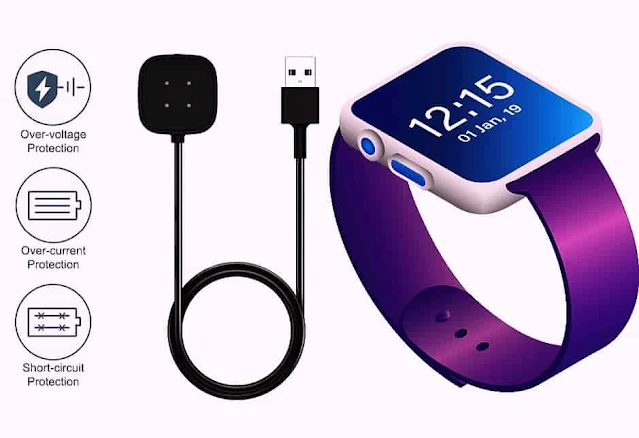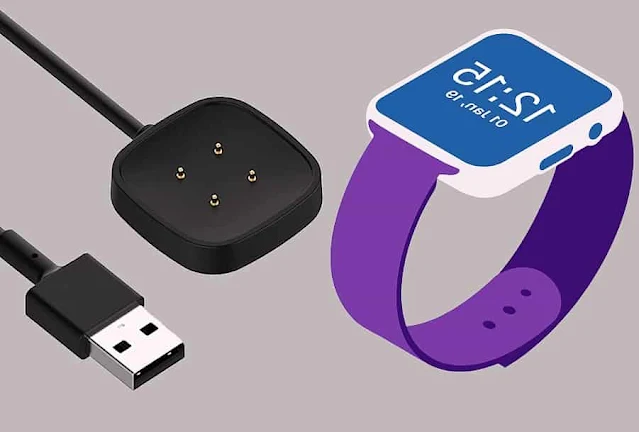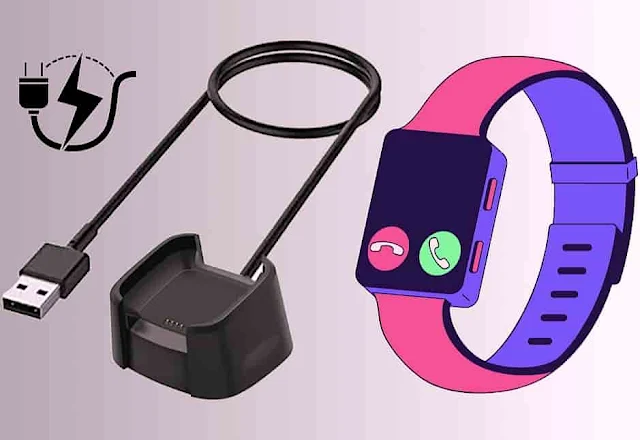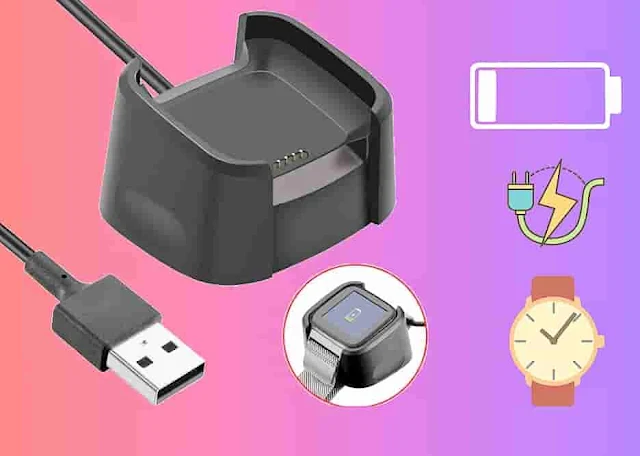"Energize Your Fitness Journey: The Ultimate Guide to Your Fitbit Watch Charger"
Introduction: Looking for a reliable Fitbit watch charger to keep your device powered up and ready for action? Our high-quality Fitbit watch charger is the perfect solution for all your charging needs. Whether you need a replacement charger or an extra one for convenience, our fast charging cable is designed to provide a seamless charging experience for your Fitbit device.
Types of Fitbit Watch Chargers
1. **USB Charging Cable**
This is the standard charger that comes with most Fitbit models. It typically has a USB connector on one end and a specialized Fitbit connector on the other end, which attaches to the device for charging.
2. **Magnetic Charger**
Some Fitbit models, like the Fitbit Versa, use a magnetic charger. It attaches to the back of the watch via magnets, providing a secure connection for charging.
3. **Docking Station**
Certain Fitbit models, such as the Fitbit Ionic, come with a docking station. The watch sits in the dock, ensuring proper alignment for charging.
4. **Clip-on Charger**
Older Fitbit models, like the Fitbit One or Fitbit Zip, use a clip-on charger that attaches directly to the device. These are less common with newer Fitbit models.
5. **Wireless Charging Pad**
Some Fitbit watches, like the Fitbit Sense, support wireless charging. Users can place the watch on a wireless charging pad to recharge the battery.
6. **Portable Keychain Charger**
There are also portable keychain chargers available for Fitbit watches, which are convenient for on-the-go charging.
Compatibility
1. **Check Fitbit Model**
Identify the exact model of your Fitbit watch. Common models include Fitbit Versa, Fitbit Charge, Fitbit Inspire, Fitbit Sense, and more.
2. **Examine Charging Connector**
Inspect your Fitbit watch to determine the type of charging connector it uses. Fitbit devices can have various connectors, including standard USB, magnetic, or proprietary connectors.
3. **Read Product Descriptions**
When shopping for a charger, carefully read the product descriptions and specifications provided by the manufacturer or seller. They should indicate which Fitbit models the charger is compatible with.
4. **Check Reviews and Forums**
You can also check user reviews and Fitbit community forums to see if others with the same Fitbit model have successfully used the charger you're considering.
How to Choose the Right Charger
1. **Identify Your Fitbit Model**
Determine the exact model of your Fitbit watch. This information is typically available on the device itself or in the product documentation.
2. **Check the Charging Connector**
Examine your Fitbit watch to see what type of charging connector it uses. Fitbit devices may have a standard USB connector, a magnetic charger, a proprietary connector, or support wireless charging.
3. **Review User Feedback**
Check user reviews and forums to see if others with the same Fitbit model have successfully used the charger you're considering. This can provide real-world insights into compatibility.
4. **Purchase from Reputable Sources**
Buy the charger from reputable sources, such as the official Fitbit website, authorized retailers, or well-known online marketplaces. This helps ensure that you're getting a genuine and compatible charger.
5. **Contact Fitbit Support**
If you're unsure about compatibility or have any doubts, consider reaching out to Fitbit customer support through their official website. They can provide guidance and recommend compatible chargers for your specific Fitbit model.
7. **Consider Additional Features**
Some chargers offer additional features, such as fast charging, longer cables, or portable designs. Consider your specific needs and preferences when choosing a charger.
8. **Check Warranty and Return Policy**
Verify the warranty and return policy for the charger you're purchasing. This can provide peace of mind in case you encounter any issues with compatibility or functionality.
9. **Keep Your Fitbit Updated**
Ensure that your Fitbit device is running the latest firmware or software updates. Sometimes, updates can improve charging compatibility.
Charging Tips (Charging Tips
1. **Use Genuine Fitbit Chargers**
Always use genuine Fitbit chargers or chargers recommended by Fitbit for your specific device. This ensures compatibility and safe charging.
2. **Clean the Charging Contacts**
Periodically clean the charging contacts on both the charger and your Fitbit device. Dust, sweat, or debris can accumulate and affect the charging efficiency.
3. **Secure Connection**
Ensure that the charger is securely connected to your Fitbit device. Magnetic chargers, in particular, should attach firmly to the back of your watch.
4. **Use a Stable Power Source**
Plug the charger into a stable power source, such as a wall outlet or a computer USB port. Avoid using a low-quality or damaged power source, which can affect charging speed and reliability.
5. **Avoid Extreme Temperatures**
Charging your Fitbit watch in extreme temperatures, either too hot or too cold, can affect the battery and charging performance. Charge your device at room temperature whenever possible.
6. **Don't Overcharge**
Fitbit devices are designed to stop charging once they reach full capacity. However, it's a good practice to unplug the charger once your device is fully charged to avoid leaving it connected unnecessarily.
7. **Charge Regularly**
Aim to charge your Fitbit watch regularly, depending on your usage. Some models may need daily charging, while others can last several days on a single charge.
8. **Update Firmware**
Keep your Fitbit watch's firmware up to date. Manufacturers often release updates that can improve battery life and charging efficiency.
9. **Battery Saving Mode**
If your Fitbit supports it, activate battery-saving mode during extended periods without access to a charger. This mode reduces certain features to extend battery life.
10. **Carry a Spare Charger**
If you frequently travel or are on the go, consider keeping a spare charger with you to ensure you can charge your Fitbit device when needed.
11. **Monitor Battery Health**
Some Fitbit models provide battery health information in the app. Keep an eye on this data to detect any irregularities or signs of battery degradation.
12. **Replace Damaged Chargers**
If your charger becomes damaged or frayed, replace it promptly to avoid issues with charging and potential damage to your Fitbit watch.
Common Charging Problems
1. **Charger Not Recognized**
If your Fitbit charger isn't recognized when you plug it in, try the following:
- Ensure the charger is securely connected to both your Fitbit device and the power source.
- Clean the charging contacts on both the charger and your Fitbit.
- Use a different power source or USB port to rule out issues with the power supply.
2. **Slow Charging**
If your Fitbit watch is charging slowly, consider these steps:
- Use a higher-output charger or a wall adapter with more power.
- Ensure the charger and device connections are clean and secure.
- Close unnecessary background apps on your Fitbit to reduce power consumption during charging.
3. **Fitbit Won't Turn On After Charging**
If your Fitbit device doesn't turn on after charging, try:
- Holding down the device's power button for an extended period (usually 10-15 seconds) to force a restart.
- Ensure the charger and device are compatible and functioning correctly.
4. **Overheating During Charging**
Overheating can be caused by various factors, including a damaged charger or power source. To address this:
- Disconnect the charger and let your Fitbit and charger cool down.
- Use a different charger or power source if overheating persists.
5. **Fitbit Drains Quickly After Charging**
If your Fitbit watch's battery drains quickly after charging, consider these steps:
- Check for firmware updates and install them if available.
- Restart your Fitbit device to clear any background processes.
- If the problem continues, contact Fitbit support for further assistance.
6. **Fitbit Shows Inconsistent Battery Percentage**
Sometimes, Fitbit devices may display an incorrect battery percentage. To address this:
- Restart your Fitbit watch.
- Allow your Fitbit to run down the battery completely, then fully charge it to recalibrate the battery percentage.
7. **Fitbit Device Won't Stay Connected to Charger**
If your Fitbit watch keeps disconnecting from the charger, try:
- Cleaning the charging contacts on both the device and charger.
- Ensuring the charger is positioned securely on the back of the Fitbit (for magnetic chargers).
- Checking for any physical damage to the charger or charging port.
If you've tried these troubleshooting steps and continue to experience charging problems, it's a good idea to contact Fitbit customer support or seek assistance from an authorized service center for further diagnosis and resolution.
Conclusion
1. **Identify Your Fitbit Model**
Determine your Fitbit watch model to select a compatible charger.
2. **Use Genuine Chargers**
Always use genuine Fitbit chargers or those recommended for your specific device.
3. **Secure Connection**
Ensure the charger is securely connected, especially for magnetic chargers.
4. **Monitor Temperature**
Charge your Fitbit watch at room temperature and avoid extreme temperatures.
5. **Troubleshoot Charging Issues**
Address common charging problems such as slow charging or overheating with troubleshooting steps.
By following these guidelines, you can ensure that your Fitbit watch remains charged and ready to track your fitness and daily activities effectively. Proper charging practices can help you enjoy the full benefits of your Fitbit device for a long time.
**Disclaimer:**
The information and advice provided here are for general guidance purposes only. Fitbit watch chargers and their compatibility with specific Fitbit models may vary over time, and it is essential to verify compatibility with your Fitbit device before making a purchase.
Please refer to the official Fitbit website, product documentation, or contact Fitbit customer support for the most up-to-date and accurate information regarding compatible chargers for your Fitbit watch.
We do not endorse any specific charger or brand mentioned here, and users should exercise caution when purchasing third-party chargers to ensure safety and compatibility with their Fitbit devices.
Any actions taken based on the information provided here are at the user's discretion and risk. We recommend following Fitbit's official guidelines and recommendations for charging your Fitbit watch to ensure safe and effective charging.
Please consult the official Fitbit website or Fitbit customer support for any specific concerns or inquiries related to Fitbit watch chargers and compatibility.
----------





